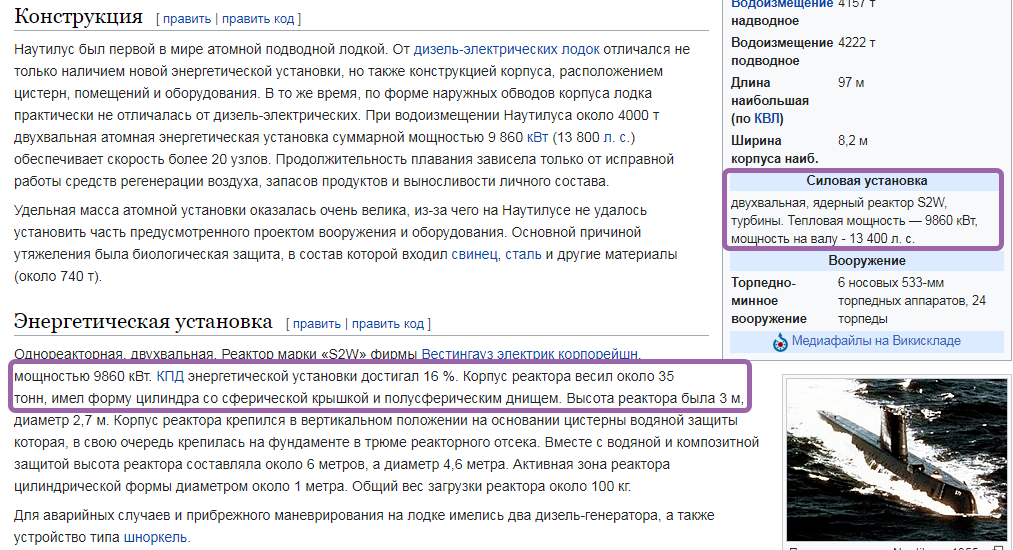
In previous articles, we have already dealt with cosmic velocities, the Obert effect and the Tsiolkovsky formula, and in this article we will compare the Lunar program with the colonization of Mars and how realistic it is to send great apes to Mars at all.
By the way, recently, Elon Mars, our Musk announced that he was going to spend all his money on the colonization of Mars ($ 188 billion). Counting other people's money, of course, is not decent, but do not worry - I will do all the dirty work for you.
How many Lunar programs are today? 188 Billion dollars?
For the entire Lunar program, the United States spent 25.4 billion (over 10 years). In 1970, all US government spending was ~ 200 billion (per year). Those. The lunar program cost ~ 12% of the total US expenditures for 1 year.
State The US budget in 2019 was ~ 3,000 billion, and 13% is 390 billion. Elon Musk's fortune is 188 billion, i.e. - Elon Musk has today ~ 48% of what the United States spent on the entire Lunar program.
It turns out that Elon Musk can take 6 people to the moon and back? - no, of course, launching and controlling a rocket in the 60s and today are completely different things. One launch of the Saturn 5 rocket cost about a billion dollars and it was 0.5% of the entire state's expenses for the year.
Today there are no such heavy rockets, but if we compare stupidly in mass, then Saturn 5 weighed 3000 tons at the start, and Faclon 9 weighs 550 tons, i.e. 1 Saturn = 6 Falcon. The Falcon launch costs 62 million * 6 = 372 million, even without taking into account inflation, the launch of the cargo into orbit has become 3 times cheaper.
In the lunar program, the price of rockets was only 40%, the rest of the costs are life support technologies, etc., but in this article I will mainly consider the mass of the rockets themselves, fuel and payload.
How much mass can you put on Mars in 188 Billion? Dollars?
Elon Musk promised us 188 billion, but so be it, we will leave him 2 billion for retirement. So, 186 billion is 3,000 Falcon rockets, 1 rocket brings 22.8 tons to LEO = accelerates them to 7.9 km / s and can send 4,040 kg to the Earth-Mars transition orbit. To go to Mars, you need a speed of 11.6 km / s = therefore, when accelerating by 3.7 km / s (11.6-7.9), the payload is reduced by 22.8 / 4.04 = 5.6435 times. We will fly to Mars at a speed of ~ 5.7 km / s, and Mars has a very rarefied atmosphere, and you can slow down on it. At the first "touch" we need to slow down by ~ 700 m / s (up to the second cosmic speed = 5.03 km / s), we will enter the orbit of Mars and will be able to slow down each revolution around it to 3.55 km / s (1- th CS), at a lower speed we will already leave orbit and begin to "fall" to the surface.Of course, we can drop a few more km / s when lowering - braking against the atmosphere, but let's take the previous figure = 3.7 km / s - that is, we will start braking with engines from 3.7 km / s to zero. This means that the mass of the payload will again decrease by 5.6435 times = 4040 / 5.6435 = ~ 716 kg
We have 3,000 missiles = 2,148,000 kg = 2,148 tons. Is it a lot or a little? Well, these are 596 tractors (3.6 tons each) - that's decent. (Moreover, we started to slow down with engines very early and in fact the payload can be 2-3 times larger).

How many monkeys are in 596 tractors?
The path to Mars is not short (400 million km) and not fast (270 days) and a transport station will be needed, it will certainly cost a lot, but it needs to be built only once. For example, 3 people flew to the Moon, and only 2 descended to the surface, one remained in the command module in the orbit of the Moon. And obviously the same can be done with Mars, the transport station does not need to be planted on Mars, but it can be thrown in the orbit of the Sun, in 5-6 years it will again fly near the Earth and it can be reused. It will just need to "catch up", park the rocket and fly to Mars with comfort, and the second flight to Mars for humans will cost much less.
But the first time it will still have to be built. We have 3,000 rockets, let's divide them into vehicles / equipment for Mars / live mass for Mars. 1 rocket launches 4.04 tons into Earth-Mars orbit, 1000 rockets = 4040 tons (this is the mass of 10 ISS). But we still need food. To travel to Mars in business class, a person will need 20 kg of supplies every day (food + water + oxygen) 20 * 270 = 5.4 tons, during the flight a person will eat 1.5 tractors. On the one hand, there is a lot, but on the other hand, supplies will cost about $ 80 million per person (and this is with zero processing and without taking into account the fact that in 270 days the crop can be harvested 2 times). And the total mass is the same as that of 10 ISS - 40 people can be sent for sure. 220 tons of supplies and 3,820 tons of station. On the ISS, the crew is 5-6 people, and then there are 4 people on the ISS.At the same time, 8,080 tons for Mars will still fly nearby, and they can be covered not only from solar radiation, but also from the entire galaxy in general. At the same time, 716 tons of equipment and 716 tons of "live weight" will descend to Mars.
Is it possible to build a colony out of 716 tons of "equipment"?
It would hardly be possible to call it a colony - rather a nursery. No complex production will work out of such a mass, and if the scotch tape runs out (or, God forbid, blue electrical tape), then they will have to be ordered from the Earth. But it is quite possible to build a biologically self-sufficient colony. On the very first nuclear submarine, a nuclear reactor weighed 35 tons and produced a power of 10 MegaWatts.

And 10 MW is 120 tractors working at the same time and this energy is not only enough for life support, but there will still be left for the operation of equipment for construction or digging out something from under the Earth of Mars - and all this for 48% of what was spent on the Lunar program 50 years ago. Although this is the price of only the missiles themselves, excluding technology. But on the other hand, we counted consumption with zero recycling at 5.4 tons per person (20 kg per day) - what other technologies are missing? Refrigerator?
To be honest, personally, these figures shocked me a little - earlier it seemed to me that the colony on Mars was something at the level of the Egyptian pyramids - a tomb for the pharaohs, but in fact, rockets became much cheaper. If you divide this entire expedition into 40 people, then you get 4.5 billion per person. It's a little expensive, of course, but it's far from Egyptian pharaohs, and it's not a tomb - it's 1,500 tons, and the mass of the reactor is 35 tons, +30 tractors = 100 tons, +300 tons of supplies for a year for 40 people and there is still a thousand tons left - this is quite enough for the construction of houses, mines, farms, roads. Food for the flight will cost 80 million, and to bring another 10 tons of cargo with you to Mars, you will need another ~ 900 million - even a billion will be enough to move to Mars.
Duck can send it all to the moon?
It is much more expensive to drag Humans to Mars than to the Moon, but the situation with cargo is completely different. To fly to the Moon, you need a starting speed of 11.1 km / s, and to fly to Mars 11.6 - only 0.5 km / s more. But when approaching the Moon, our speed will be ~ 2.6 km / s and all of it will have to be extinguished by the engines. And when approaching Mars, 5.7 km / s, but it has an atmosphere and most of the speed can be extinguished about it. And acceleration is very expensive (as we thought at the beginning, 3.7 km / s burns ~ 85% of the rocket mass) and if we can decelerate against the atmosphere at least up to 1 km / s, then the payload will be 2 times greater than during landing to the moon.
It is more difficult to return from Mars (you need 5.7 km / s), but on Mars it is easier to build the fuel production itself and when landing cargo, Mars has a huge advantage over the Moon. And in the end - well, a monkey will eat 1.5 tractors, well, he sniffs half a ton of oxygen from the fuel tank, but a colony still cannot be built out of two tractors and there should be ten times more of them - in any case, the live weight will be only a few percent of the mass of equipment. Therefore, the loss of 1-2 tractors will not affect their population in any way - they will not die out from this and will not even notice anything. And all the same, the savings in landing equipment on Mars will many times exceed the cost of transporting People, compared to the Moon.
Honestly, I myself was very much surprised when I figured it out myself, I used to think: - they will send a maximum of 2-3 monkeys and again forget for 50 years (or maybe they will be stupidly removed in Hollywood, although ... I would love to watch a series with a budget of at least 300 billion USD (like 1200 Avatars !!!))
The shocking truth about flying to the moon


but it turned out to be quite different. Rockets have fallen in price very much and even 1 person, even the richest, can send 1,500 Tons to another planet. And if we imagine that China, the EU, and India will spend the budget of the Lunar program (10% of the annual budget), and also take into account mass production, which in any case will reduce the cost of rockets several times, then you can actually send to another planet hundreds of thousands of tons of cargo and build several cities with thousands of residents.
- ?
What for? - this question, of course, remains open. Although in the last article, I already wrote about a gravitational engine, which in the orbit of Jupiter can produce 1,800 MJ * kg (like 60 kg of Gasoline) from any dropped stone, but it has a minimum structure mass of more than a million tons and cannot be pulled out from the Earth so much. but here I would like to draw your attention to something else: - the fact that oil will soon run out, and without oil it will be impossible to put anything into Earth's orbit !!! Nuclear / ion thrusters, solar sail and other fantastic thrusters have extremely low thrust and cannot overcome the acceleration of gravity of the Earth, and they start to work only after reaching the minimum orbit of the Earth. And without oil, nothing can tear us away from the Earth - heptyl, hydrazine, methane - all these are oil derivatives,or rather, this is a huge legacy that we inherited from the dinosaurs - and it will soon end. And in fact, if we do not colonize anything for the next 20-30 years, then we will never colonize anything, we will remain monkeys - a civilization of one planet ...
In the following articles, we will talk about what needs to be colonized in the first place and how to make flights between planets 10-15 times cheaper.
Psss ....
?
.
, , ( , ) — , , !!!— , . , , .
… … … 37 ? , . , , 30 . .
… … … 37 ? , . , , 30 . .
An article about a gravitational generator that got a fantastic 7 thousand views.
Sometimes, between states, I'm neither alive nor dead - I collapse on twitch .